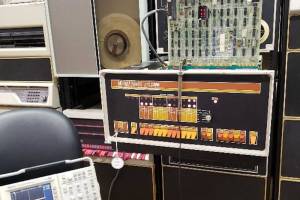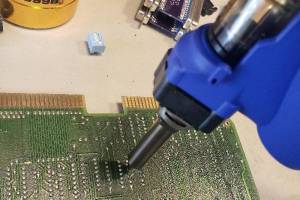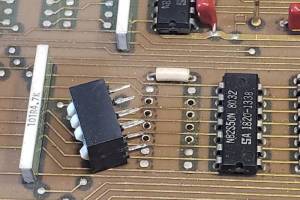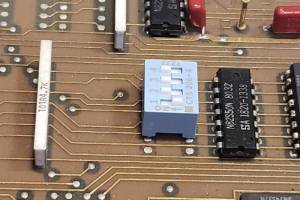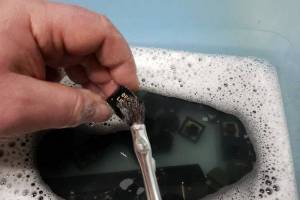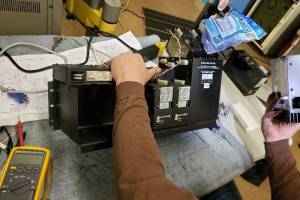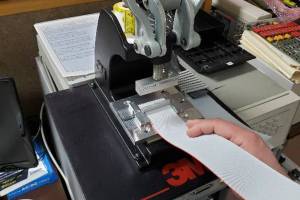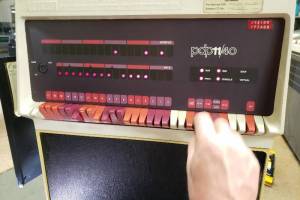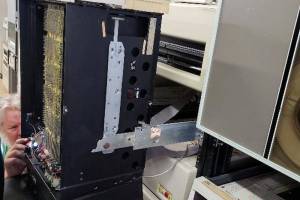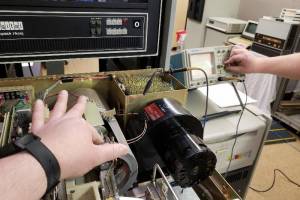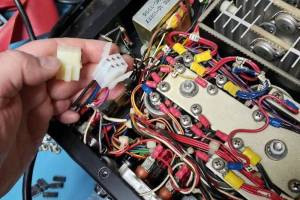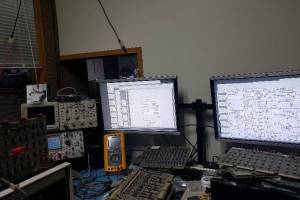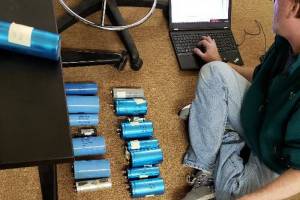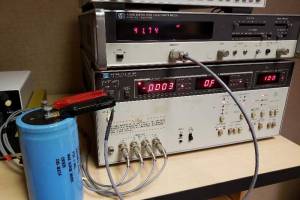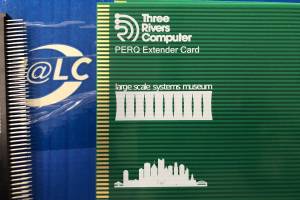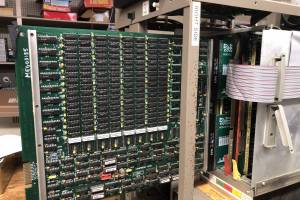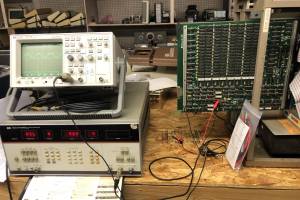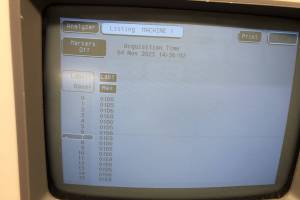Menu
Behind The Scenes at LSSM
As our exhibits are “up and running” for visitors to see and explore, they often require maintenance and repairs. Further, almost nothing that we receive is functional when we receive it, so bringing functional exhibits to the public often involves a lot of work by our dedicated (and sometimes fanatical!) tech staff.
Here are a few snapshots of the type of work that we do when there aren't any visitors around. Between newly-acquired equipment being prepared for exhibit and maintenance of on-exhibit systems, this is an almost constant process here at LSSM. Most of our all-volunteer staff are experienced engineers who do this type of work for a living, but as a labor of love after hours at LSSM.
Click on the photos below to see larger versions.
Repair of a serial I/O board in a DEC PDP-8/e. Since some of our systems are large and difficult to move, sometimes repairs are made right on the exhibit floor.
Replacement of a failed DIP switch on an HP 2117F minicomputer's memory board. Hewlett-Packard, having started out in the electronic test equipment business, has been building computers since the late 1960s, starting out with laboratory and departmental minicomputers. The first HP computers were designed to automate measurements in electronics laboratories. Here, an LSSM technician is replacing a failed switch component on an HP minicomputer circuit board from 1980.
Cleaning keycaps from a Heathkit H-19 terminal. Though we work with some of the most complex computers ever designed, not all of the work is technical. An LSSM technician got a nasty case of dishpan hands working on this keyboard, but the result is a mid-1970s video terminal that looks like new!
This DEC PDP-11/40 minicomputer, built in 1974, came to us from the University of Pittsburgh. It had been sitting in storage for many years, and needed quite a bit of work to come back to life. We rebuilt its power supply, replaced several failed ribbon cables, and performed some minor repairs.
Diagnosis of DEC PDP-11/34A power supply failure. Computers from this era were very reliable, but now, nearly half a century later, breakdowns do occur. This minicomputer, built in 1976, needed a bit of power supply work recently.
LSSM technician performing a head servo adjustment on DEC RK05 disk drive. Adjustments like this are complex and sensitive, but this equipment is well-documented, and our experienced team is comfortable with this type of maintenance. Most of us really enjoy this type of work; it's just like a car nut giving a classic Corvette a tune-up. The same passions, for the same reasons.
Working on a DEC PDP-8/E, a 12-bit minicomputer built in 1969. It needed some power supply repairs and the somewhat complex diagnosis of several failed chips within its processor.
Capacitor triage in a DEC RP06 (Memorex 677-01) disk drive. These large capacitors are frequent failure items, and they are expensive to replace. Fortunately we have the proper lab instruments to test them, so that we end up replacing them only when necessary.
The Perq is a powerful engineering/visualization workstation built by Three Rivers Computer Company, here in Pittsburgh, in the late 1970s. These systems are quite rare today, and sought-after by collectors. They are also somewhat cantankerous: LSSM's Perq is not functional, but our restoration team is working on it, knocking out one problem after another, and creating some new tools in the process.

